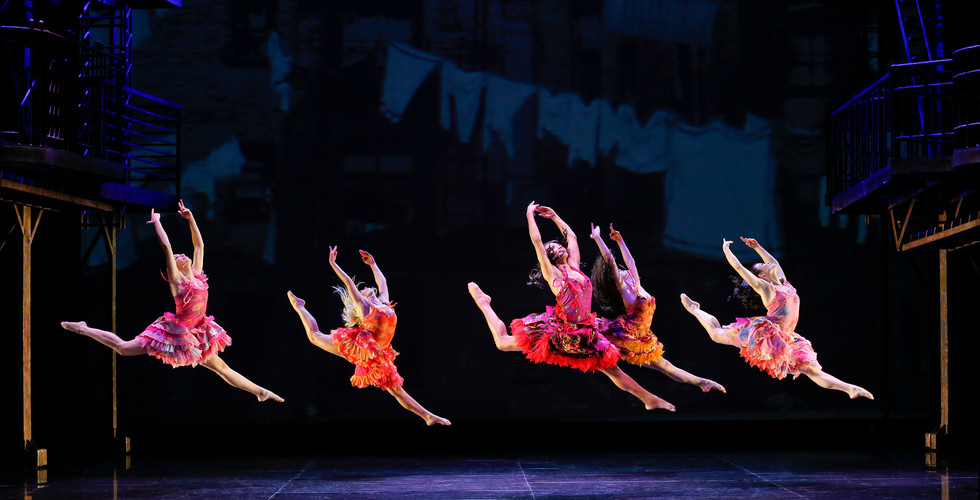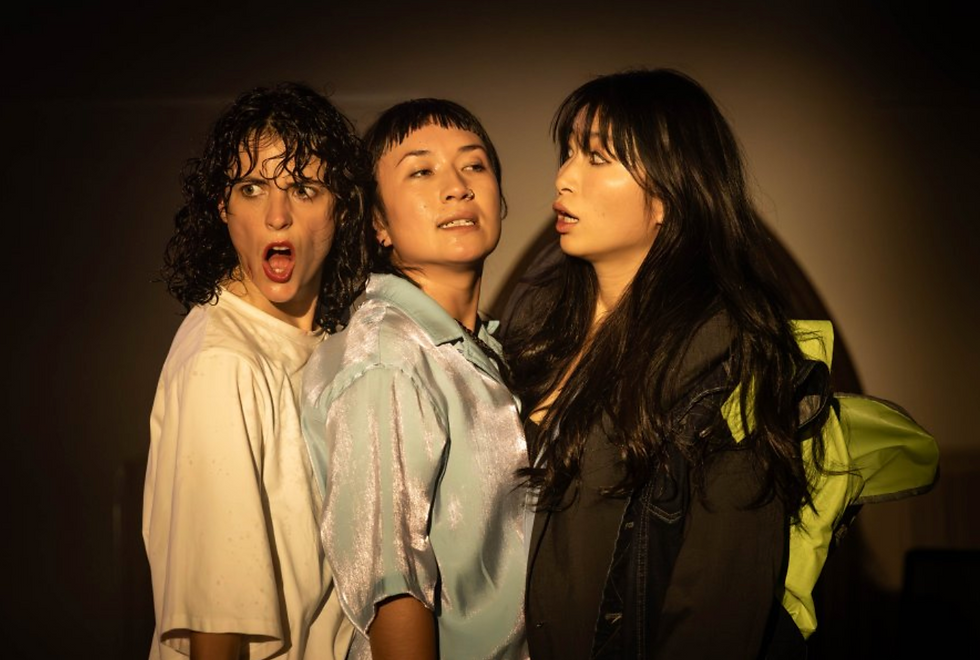Review: West Side Story at the Arts Centre Melbourne
- Theatre Travels

- Apr 10, 2019
- 4 min read
By Nicola Bennett
The (musical) theatre’s favourite star-crossed lovers graced the main stage of the Arts Centre this week, as Opera Australia and GWB Entertainment present the return of West Side Story once again to Melbourne. A production that originally debuted in 1957, West Side Story vividly documents the events of a racially-charged conflict that plays itself out on the streets of 1950’s New York. The players at the root of the show’s conflict are the ‘Jets’ and the ‘Sharks’, two rival gangs of the Upper West Side who defend their turf with unwavering loyalty and unequivocal hatred for the opposing side. Amongst this tension emerges an unlikely (and more importantly, prohibited) romance between Tony, a local boy with loyalties to the Jets, and Maria, a Puerto Rican immigrant whose brother is currently the leader of the Sharks. Cultural tensions and tested alliances accumulate and explode on stage as a dramatic fall-out forever changes this community.
The casting of Tony and Maria delivers performers of a high vocal standard and excellent characterisation. Todd Jacobsson’s depiction of the love-struck Tony achieves an appropriate level of youthful optimism without bordering on total naivety, while Sophie Salvesani’s role as Maria marks her professional theatre debut and should be commended for demonstrating such restraint and maturity in her role as the young conflicted Maria. Both actors are highly capable vocalists, and deliver Leonard Bernstein’s at times challenging score with great control and professionalism. Appropriately balancing the two performers’ distinctly different voices did seem challenging in moments, demonstrating the importance of ensuring Maria’s more delicate operatic parts were not lost beneath Tony’s bolder vocal style. This factor is particularly noticeable when vocal projection is already sufficiently demanding in a space as extensive as the State Theatre. However, this factor does not detract from the experience as an audience, as Jacobsson and Salvesani treat viewers to skilful renditions of the couple’s renowned duets.
Unlike some musical productions, West Side Story is a performance that is equally demanding of both its principle roles and its large supporting cast. The gathered ensemble shone on stage in both their respective gang scenes and also in big-scale numbers. The fast-talking American-born Jets and the quick-thinking Puerto Rican Sharks both radiate frustration and mistrust, both of each other and of a wider community that discounts them as valued members of society. Although the union of Tony and Maria provides us with a confronting insight of how this racial tension affects individual relationships, it is the aggressive confrontations between the two social camps that represent the show’s serious xenophobic themes at a more macro level. It is a credit to the cast that as an audience, we feel that we are experiencing an authentic tension and fragility of a young community first-hand.
Further recognition must also be extended to Chloe Zuel as Anita, who is a stand out performer throughout the entirety of the production. Zuel’s powerful characterisation of this strong female role with both bravery and vulnerability is electric and cannot be commended enough.
Strong expressiveness and intense physicality bring a youthful vitality to the performance, as performers make full use of the entire stage and each other to propel, lift and soar through the show’s iconic dance fighting scenes. Choreography from Joey McKneely brings further storytelling to the physical conflicts, reminding audiences of the potential for beauty in this harsh environment and highlighting the misused energy of these young people, utilised instead for hatred and violence.
Full use of the stage is enabled through the extensive framework of balconies and fire-escapes that towers over the actors. This instantly recognisable feature of the New York apartment buildings creates a great contextualising effect for the audience. It also creates a dwarfing effect on the actors, as if to provide a structural reminder of how this neighbourhood conflict is just one small example of the issues that plague a city and greater society as a whole. The use of the large space is effectively supported by Peter Halbsgut’s lighting design, which uses a range of colouring, spotlighting and the larger background screen to emphasise pivotal moments and emotional transitions.
Costuming by Renate Schmitzer adds further dimensions to the production, as colour choices and styles demonstrate intentional use of design to differentiate the two sides. The bold suits and dresses of the Puerto Rican youth are representative of both their vibrancy as a cultural group, and their strong social presence that causes the Jets to be so antagonised. Similarly, the rough streetwear of the Jets provides a glimpse into the bleakness of their situation and the working class grit that they assume to survive.
Bringing younger audiences to this production should be at the adults’ discretion, as some subject matter may be confronting for young viewers at times; however, for teens and young adults, this production can provide a great springboard for conversation about more challenging topics and issues that remain prominent in the community. West Side Story is certainly emotional theatre - it tests those accustomed to the common story arc of musical theatre that leaves the audience on a predictable high note. What this production achieves is a strong conclusion that still has the audience emotionally invested, but challenges the sometimes preferential treatment of a “feel good” theatre experience. Instead, West Side Story invites audiences to take a step back and observe the internal unravelling of a community divided, and to perhaps reflect on its ever-relevant lessons that still apply today. West Side Story is complex and beautiful, and this year’s production is a testimony to the decades of reputation that precedes it. Book tickets quickly to this limited season before it closes on the 28th of April.
Photo Credit: Jeff Busby
All opinions and thoughts expressed within reviews on Theatre Travels are those of the writer and not of the company at large.




























